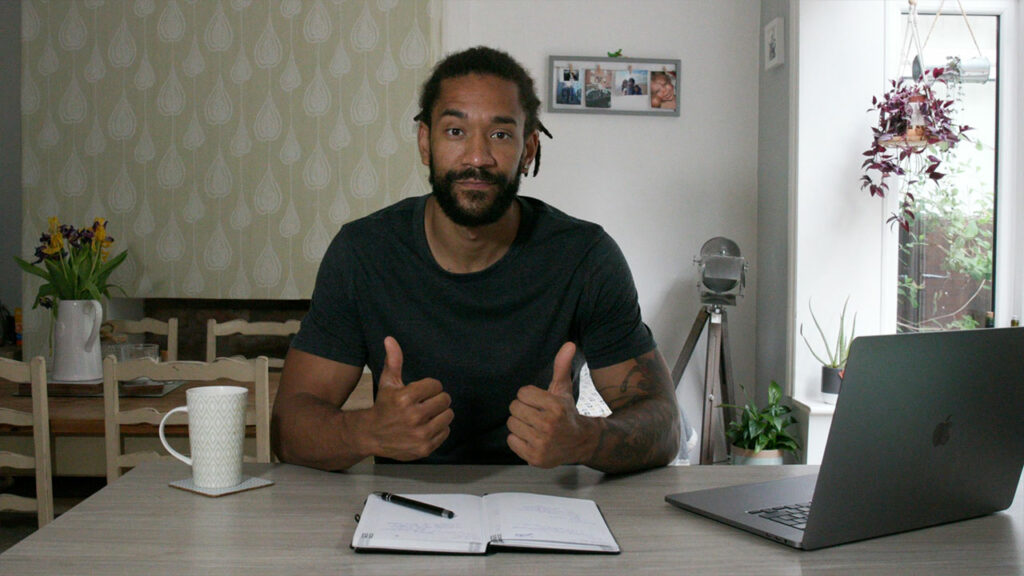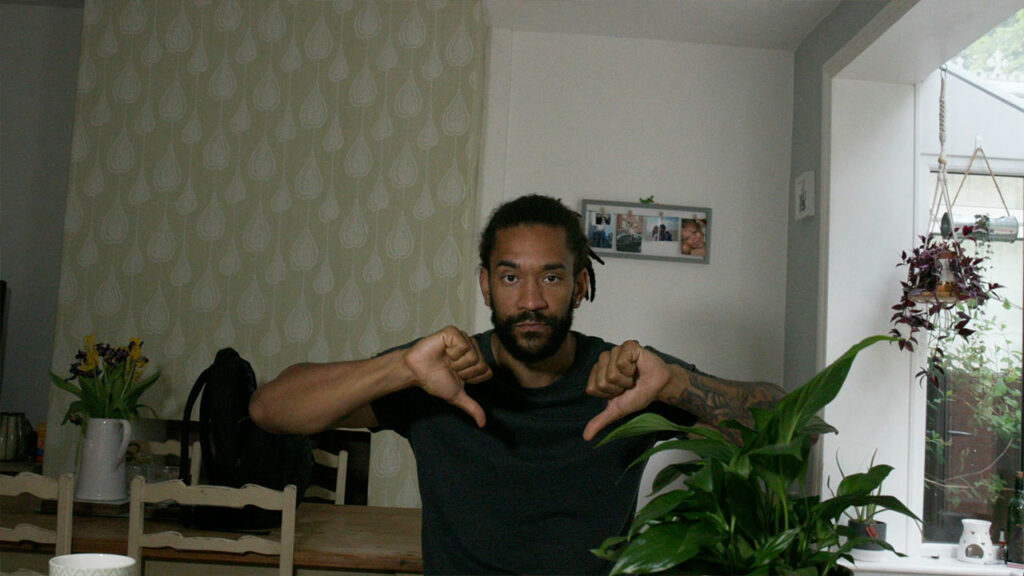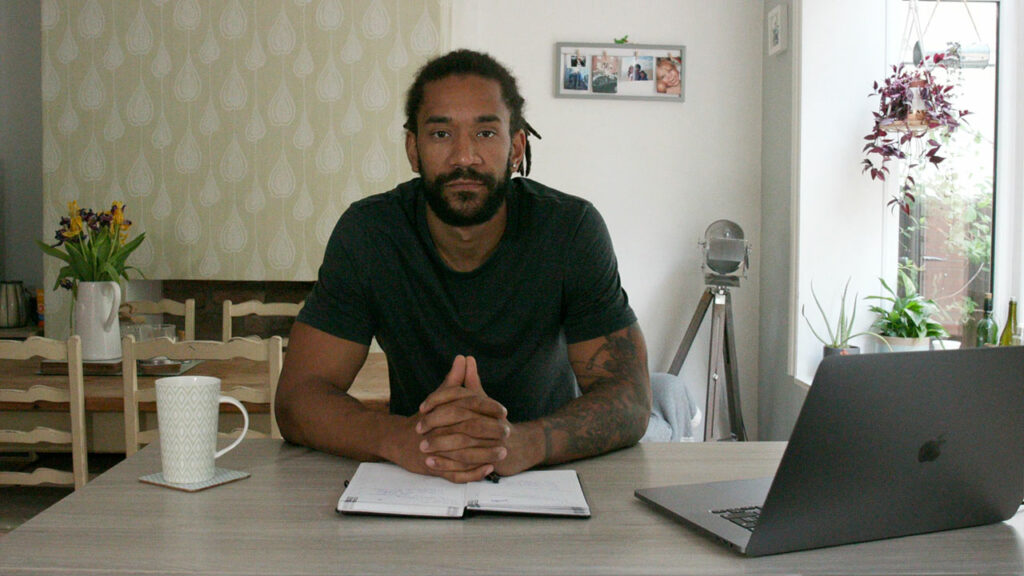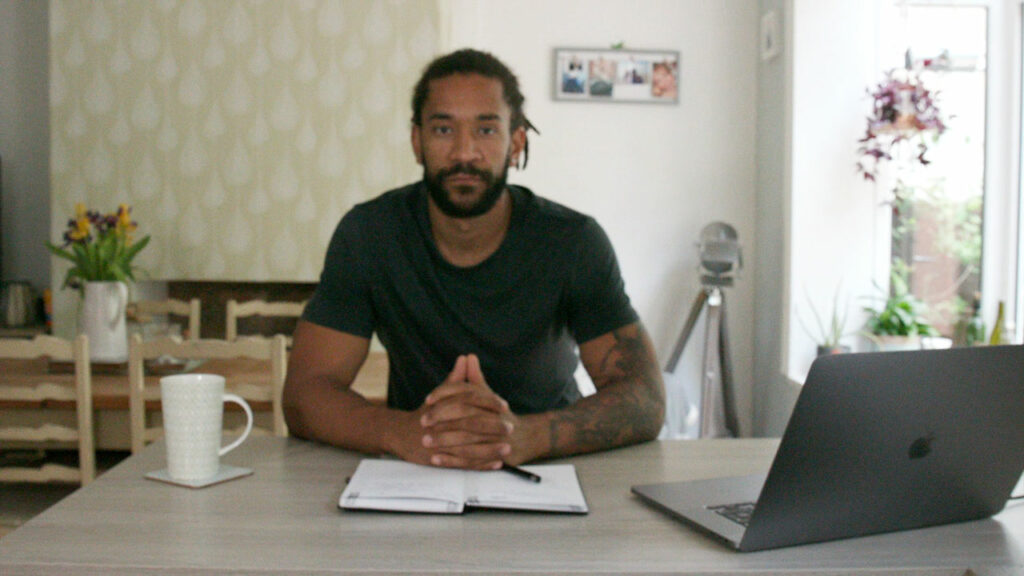With modern-day phone cameras, it’s really easy to achieve high-quality video and with just a few quick and easy tips, you can really start to make your content look and feel even better. It’s harder than ever to spot the difference between professional and amateur video footage these days. The difference usually lies in how an interview is lit, or maybe the quality of the sound. These can be tricky elements to master and a lot of the time, have a monetary value attached to improving. Framing and focus are two areas where you can, in some cases, vastly improve your picture quality and it won’t cost you a penny.
Framing
Good framing is something that can start to make your content look and feel professional, and once you know the fundamentals it is something you can start to have fun with. Good framing looks like this:

1. Headroom
This is the amount of space between the top of your subject’s head and the top of the frame. The great thing about this is that you can give as much, or as little as you like depending on your personal preference. What I would say is to keep this consistent across your project. If, for example, you need to cut together multiple interviews, then make sure you’re giving the same amount of headroom in each shot.
2. Objects in your frame
Be very deliberate about what’s in the foreground/background of each of your shots and if you have the time, think about the symmetry and balance of what’s inside your frame. If you have a coffee cup in the shot, then make sure it’s clearly identifiable whilst not obstructing your subject. Place objects left or right of frame and experiment with how close/far away from the camera they are.
3. Lighting
Use whatever lighting you have available to you to help pick out your subject. This will help you draw your audience’s attention to where you want it. If you’re filming outside, take a moment to consider the angle your shooting at. The sun is a great source of natural light and a slight change of angle can make all the difference. If you’re filming inside, then experiment with all light sources and if you have a panel light or light ring, then experiment with distance/intensity. You really do notice lighting if it’s wrong, so it’s definitely worth taking the time to get right.

On the other hand, this is what bad framing looks like…
1. Headroom
At first glance, leaving a ton of headroom doesn’t look that bad, but it can throw off your eye line if this isn’t consistent between shots. If you do decide you want to negatively frame your shots, make sure that that’s a running theme throughout your project as this is something that is really noticeable if not consistent.
2. Objects in your frame
Make sure that there’s nothing in frame that distracts from the story you’re trying to tell, i.e an open bag on the table behind, or a plant that’s obstructing your subject a little too much. Like I stated previously, make sure the things in your frame are an improvement, and are identifiable without being a distraction.
3. Angle
This is something that becomes more obvious when viewed on a laptop or a TV, a slightly skewed angle on a phone screen or camera monitor can look a lot worse when viewed on a bigger screen. A really easy fix for this is just to turn on the gridlines in your phone or DSLR camera settings. This really helps with making sure you’re shots are lined up properly, but also helps identify what works/doesn’t work within the frame itself.
Focus
Focus is something that phone cameras are great at doing automatically but if it’s not right, you really notice so it’s always good to check this before you press record! It really does affect how professional your content looks and if your subject is ever so slightly out of focus, it can bring down the quality of your project quite significantly.

Focus: Sharp 
Focus: Slightly soft
With these quick and easy-to-apply steps, the video quality will really start to improve. This can get a lot more complicated depending on what you’re shooting though, so if you’re looking for someone to come shoot and edit professional-quality digital video, then check out our work



